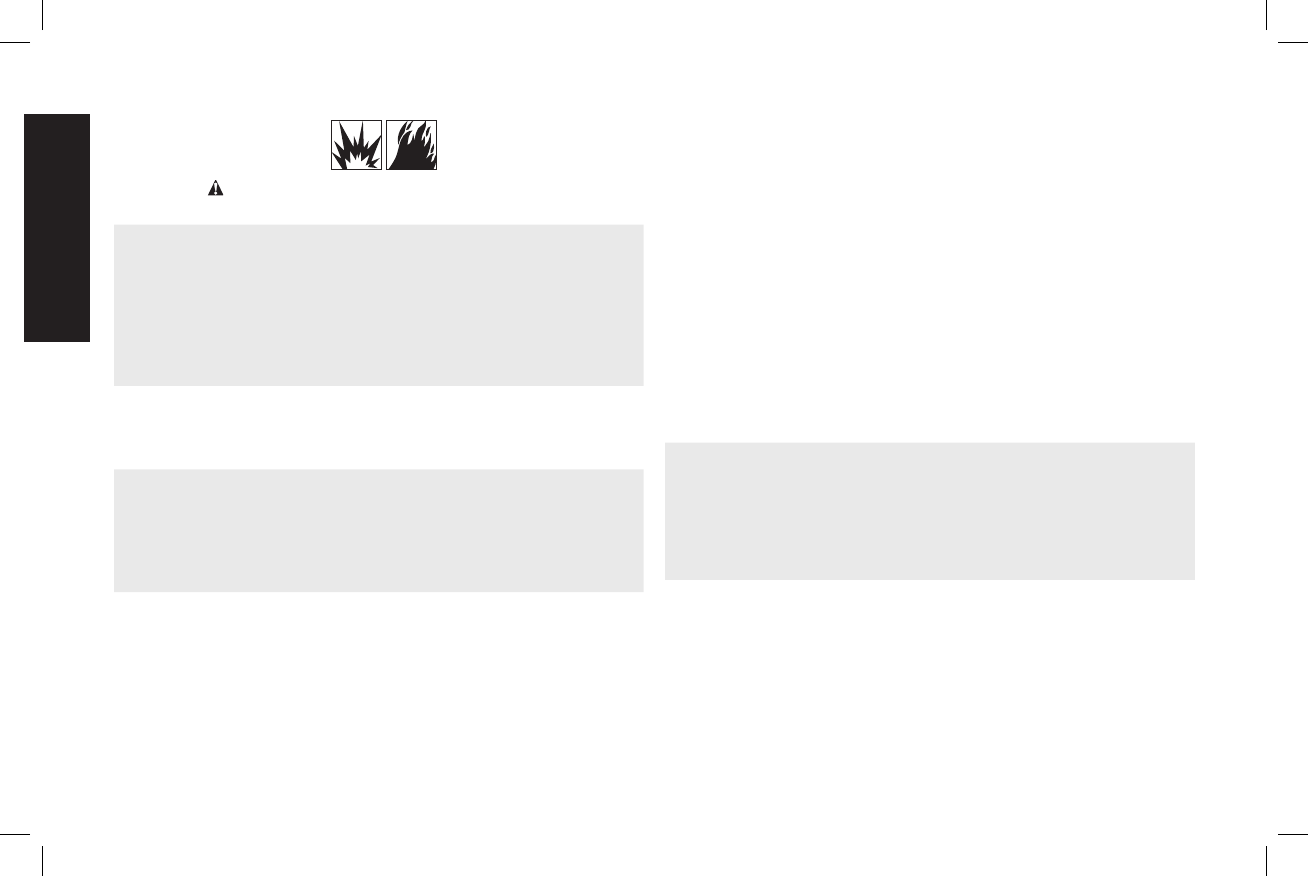
4
DANGER: RISK OF EXPLOSION OR FIRE
WHAT CAN HAPPEN HOW TO PREVENT IT
• Spilledgasolineandit’s
vapors can be come ignited
from sparks from smoking
products, electrical arcing,
exhaust, flame, gas es and
hot engine components such
as the muffler.
• Shutoffengineandallowitto
cool before removing cap and
adding fuel to the tank.
• Usecareinfillingtanktoavoid
spill ing fuel. Make sure the
cap is secure and move unit
away from fueling area before
starting en gine.
• Heatwillexpandfuelinthe
tank which could result in
spillage and pos si ble fire
explosion.
• Keepmaximumfuellevel
below the shoulders on the
debris screen
to allow for
expansion.
• Non-functioningormissing
spark-arresting muffler may
cause fire.
• Makesurespark-arresting
muffler is in place and not
damaged.
• Replacespark-arresting
muffler if damaged
or missing.
• Addfueloutdoorsinawell
ventilated area. Make sure
there are no sources of
ignition, such as smoking
products near refueling
location.
• Operateengineinaclean,
dry, well ventilated area a
minimum of 48" (1.2 m) from
any building, object or wall.
Do not operate unit indoors
or in any confined area.
• Operateengineinanopen
area away from dry brush,
weeds or other combustible
materials
.
• Improperlystoredfuelcould
lead to acciden tal ignition.
Fuel im prop er ly secured
could get into the hands of
children or oth er un qual i fied
persons.
• StorefuelinanOSHA-
ap proved con tain er, in a
se cure location away from
work area.
• Alwaysremaininattendance
with the engine when it is
operating.


















